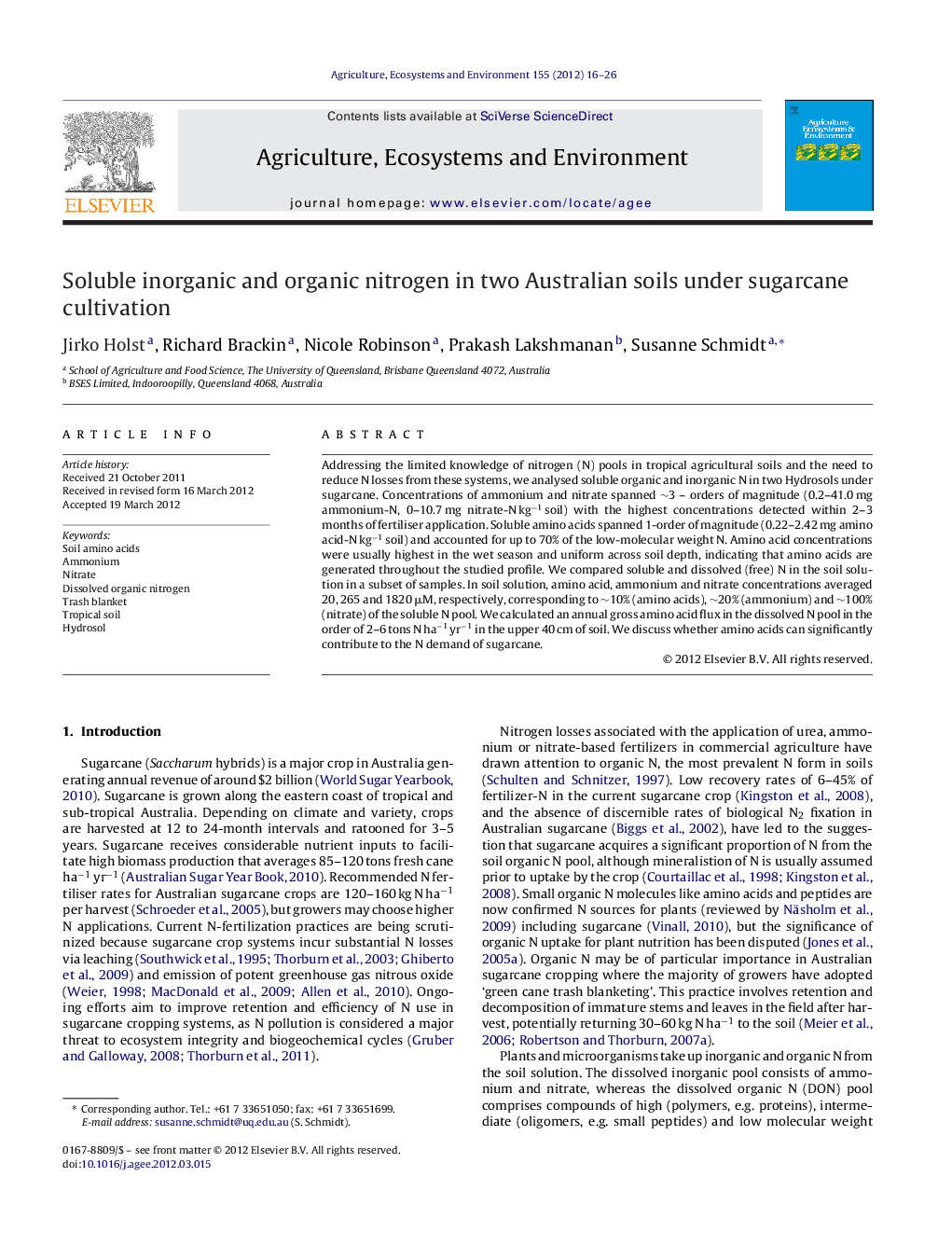| Article ID | Journal | Published Year | Pages | File Type |
|---|---|---|---|---|
| 2414556 | Agriculture, Ecosystems & Environment | 2012 | 11 Pages |
Addressing the limited knowledge of nitrogen (N) pools in tropical agricultural soils and the need to reduce N losses from these systems, we analysed soluble organic and inorganic N in two Hydrosols under sugarcane. Concentrations of ammonium and nitrate spanned ∼3 – orders of magnitude (0.2–41.0 mg ammonium-N, 0–10.7 mg nitrate-N kg−1 soil) with the highest concentrations detected within 2–3 months of fertiliser application. Soluble amino acids spanned 1-order of magnitude (0.22–2.42 mg amino acid-N kg−1 soil) and accounted for up to 70% of the low-molecular weight N. Amino acid concentrations were usually highest in the wet season and uniform across soil depth, indicating that amino acids are generated throughout the studied profile. We compared soluble and dissolved (free) N in the soil solution in a subset of samples. In soil solution, amino acid, ammonium and nitrate concentrations averaged 20, 265 and 1820 μM, respectively, corresponding to ∼10% (amino acids), ∼20% (ammonium) and ∼100% (nitrate) of the soluble N pool. We calculated an annual gross amino acid flux in the dissolved N pool in the order of 2–6 tons N ha−1 yr−1 in the upper 40 cm of soil. We discuss whether amino acids can significantly contribute to the N demand of sugarcane.
► We examine N forms in sugarcane soil. ► We show that amino acids are important in soluble and dissolved soil N pools. ► Modelled flux suggests that crops uses only small proportion of amino acid N.
